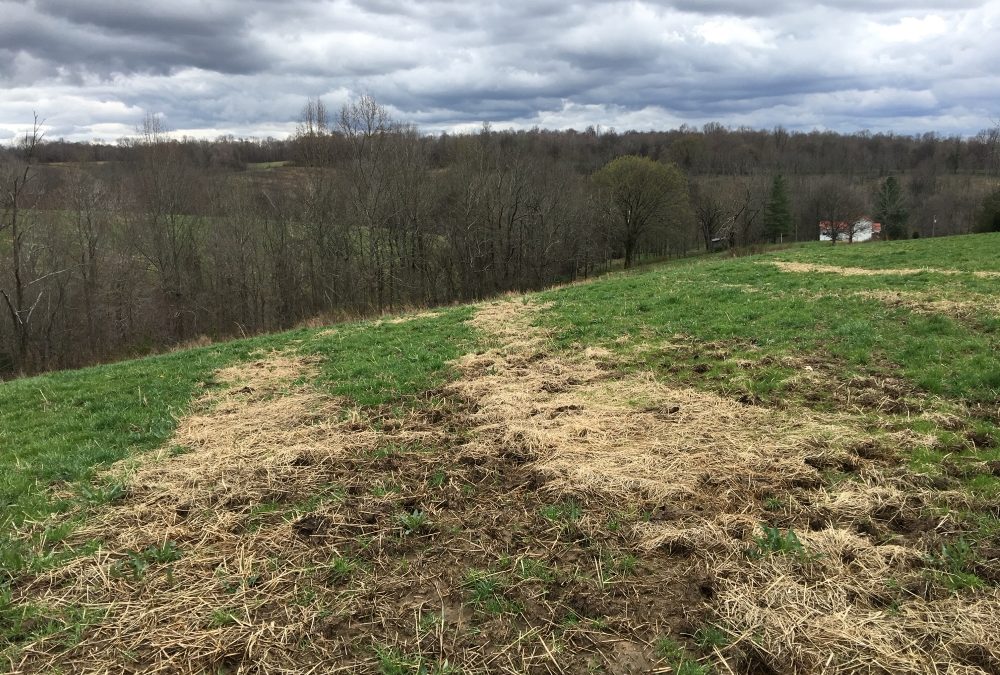
Fertilizing and Nutrient Cycling in Pastures
As I drive across the state I see a lot of broomsedge an indicator plant of low fertility. However it is not always lime that is lacking. It is often times P2O5 or even K2O. Bottom-line is take a soil test, even if you don’t plan to apply nutrients now. A soil test sets a benchmark now future soil test monitor how your management is affecting fertility. See University of Tennessee Soil testing site
http://soilplantandpest.utk.edu/publications/soilfertilizerpubs.htm
If you plan on implementing “High Density Short Duration Grazing” test organic matter as well that is how you are most likely to build organic matter. Organic matter has tremendous benefits, the main benefits being increased water holding capacity and improved nutrient cycling. Nitrogen is not test for by the lab but recommendations are returned with the soil test. If you apply nitrogen in the spring count out establishing clovers, don’t even apply 30 lbs N. If you have 30% or more clover already established omit nitrogen. In Tennessee pasture systems have too much spring growth anyway September is the time to apply N on tall fescue pasture.
What about recycling nutrients:
- one ton of hay has 45-12-45
- a cow consumes roughly 5 tons of hay per year
- 5 x (45-12-45) = 225-60-225
- Surface applied we lose half of the nitrogen (112-60-225)
- 70 to 90 % of nutrients cycle through the cow and are returned to the land or water
- Depending on grazing and hay feeding system 2% to 90% hits the pasture
- Water distribution: if travel distance to water is 800’ or less grazing utilization and nutrient distribution is good.
- Shade: if limited shade is available 20% less manure hits the paddock
Let’s assume a 3 day rotation (actually rotate when grass is 4”-3” tall), good water distribution, decent shade, and hay fed on pasture not in woods, streambank or feed pad.
- 112-60-225 = 100 % of nutrients after volatilization of N in forage (really nutrient concentration is higher because this is based on grass hay more mature than pasture and no clover)
- Take away 20% of nutrients used by the cow 90-48-180
- In a 3 day rotation it is logical to assume manure distribution = grazing distribution a conservative figure is 65% = 59-31-117
- Now how many acres is the cow covering in a year? Let’s figure 3 ac/cow 20-10-39/yr = 69 lbs of nutrient x $0.50 = $35/ac returned to pasture per year on 100 acres that’s $3500/yr these are very conservative numbers.
- A Grass/Clover maintenance recommendation for medium testing soil is 0-30-30, all that is short in this example is phosphorus. Remember to base any application on soil test results and recommendations.
- Legumes contribute additional nitrogen: 60 to 80 lbs N/ac if you keep 30% cover in legumes.